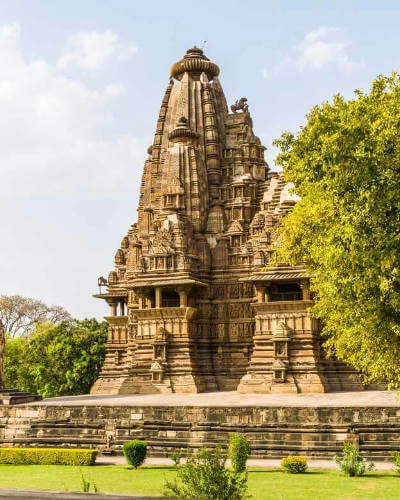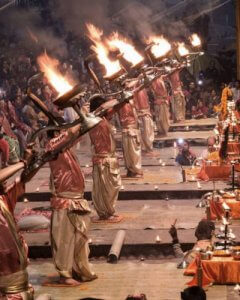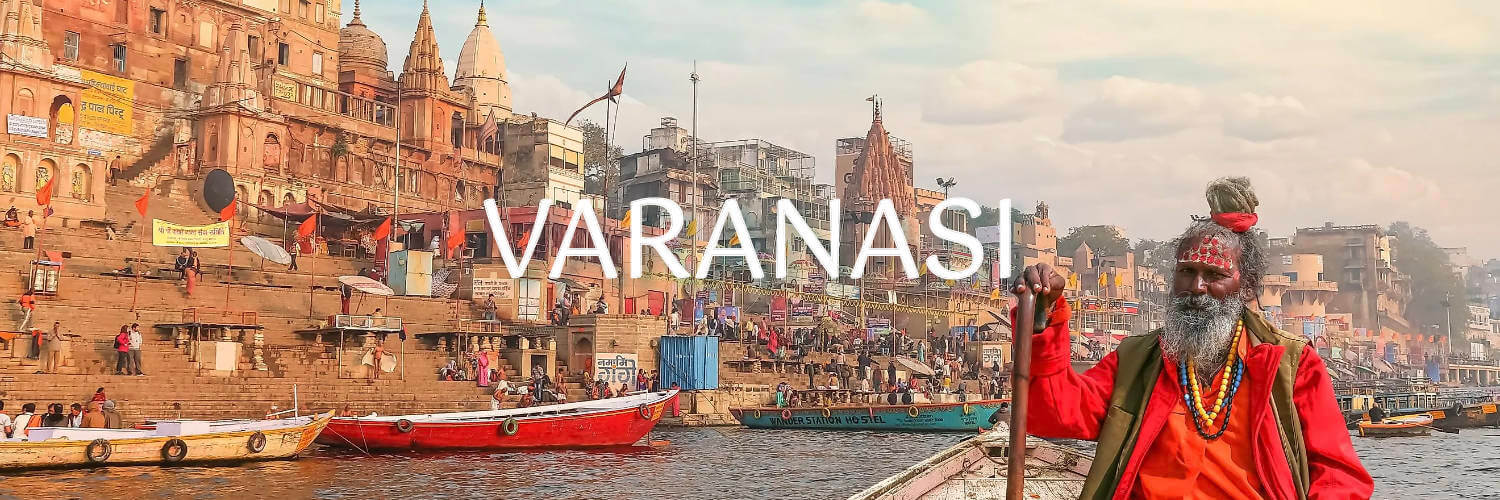Varanasi, A Journey Through Timeless Sacredness
Nestled on the banks of the holy Ganges River, Varanasi, also known as Benaras, is one of the world’s oldest continuously inhabited cities. Revered as a city “older than history, older than tradition, older even than legend,” Varanasi has been a beacon for pilgrims for centuries.
As the legendary abode of Lord Shiva, Varanasi ranks among the seven sacred cities in India. The city’s rich tapestry of history, art, and tradition contributes to its profound spiritual significance, vividly reflected in its ghats—the stepped banks of the Ganges. These ghats are the heart of Varanasi’s spiritual life, hosting timeless rituals from the awe-inspiring Ganga Aarti (a fire ritual) to solemn cremation ceremonies.
According to legend, Lord Shiva brought the celestial Ganges to earth, imbuing the river with divine sanctity. Pilgrims flock to the Ganges to bathe in its purifying waters, believing that doing so absolves one of sins and brings spiritual merit. Additionally, it is thought that those cremated along its banks attain moksha (salvation). The Kashi Yatra, a pilgrimage to this revered city (formerly known as Kashi), is considered a vital spiritual journey in many devotees’ lives.
In modern times, Varanasi has evolved into a hub of philosophy, yoga, Ayurveda (ancient medicinal science), and astrology. Its influence extends beyond Hinduism, as Varanasi is also a pivotal site for Buddhism. Just 12 kilometers away lies Sarnath, where Lord Buddha delivered his first sermon. Jainism holds Varanasi in high regard as well, citing it as the birthplace of four Jain tirthankaras (saints). The city is also linked to Kabir, a 15th-century mystic poet and saint, who was born here.
Believed to have origins dating back to 1400 BC, Varanasi is mentioned in the Upanishads (sacred Hindu texts) as Benaras. The city has long been a prominent center for trade and education, eventually adopting the name Varanasi and cementing its place in the Indian consciousness as a bridge to the ancient world. Its essence has been captured in literary works spanning centuries, from the devotional couplets of Kabir to the prose of writers such as D.N. Khatri, Hazari Dwivedi, and Jaishankar Prasad, each contributing to a rich legacy of literary, poetic, and historical documentation.
A pilgrimage to Varanasi offers an unparalleled opportunity to immerse oneself in a timeless spiritual experience and connect with a city that stands as a living testament to centuries of faith, tradition, and cultural richness.
Where we will stay in Varanasi:
Our Guest House is situated in the Ghats of Varanasi, 100 metres from Dasaswamedh Ghat, 700 metres from Kashi Vishwanath Temple and less than 1 km from Kedar Ghat. Among the facilities at this property are a 24-hour front desk and luggage storage space, along with free WiFi throughout the property. The accommodation features a concierge service, room service and currency exchange for guests. Some units have a terrace and/or a balcony with river views. At the guest house, each unit has bed linen and towels.
Spiritual Attractions and Temples

Kashi Vishwanath Temple
Every day, thousands of devotees flock to the Kashi Vishwanath Temple, located near the auspicious western banks of the Ganga River. Kashi Vishwanath is one of India’s 12 Jyotirlinga Temples, important sites of worship to Lord Shiva.
The columns, beams, and walls are decorated with finely carved ornamentation. Inside the temple compound, which is hidden behind a wall, there are numerous smaller lingams clustered around the main Lingam, the smooth black stone lingam that stands 2 feet (0.6 m) high, is 3 feet (0.9 m) in circumference, and rests on a silver pedestal. A series of Lingams can be found in the courtyard. An open colonnade to the north contains the Jnana Vapi, or Wisdom Well, the water of which is commonly believed to convey knowledge and enlightenment.

Satyalok Lahiri Mahasaya Temple
Satya Loka is the highest plane of consciousness or the highest of the heavenly realms. Satya Loka is where Brahma, Sarasvati, and Brahmins live. It is also sometimes referred to as Brahmaloka, or Brahmapura in the Puranas.
The main temple has a gigantic Shiva Lingam and Deity of Lahiri Mahasaya, as well as many different Deities of Saints. Next to this there is a cave temple dedicated to Mahavatar Babaji where we can sit and meditate.

The Ghats of Varanasi
The city’s famed ghats, a series of stepped embankments built along the banks of the Ganges River, are awash with activity, ancient rituals and practices. Some of the ghats are designated for cremations and prayer and others for bathing. There are 88 ghats in the city.
Dashashwamedh Ghat
The most colourful and impressive ghat of all, you’ll find nightly rituals performed by priests here at 7 p.m. The agni puja is a fire offering and worship to Lord Shiva, the Ganges River, the sun, the nature of fire, and the universe itself.


